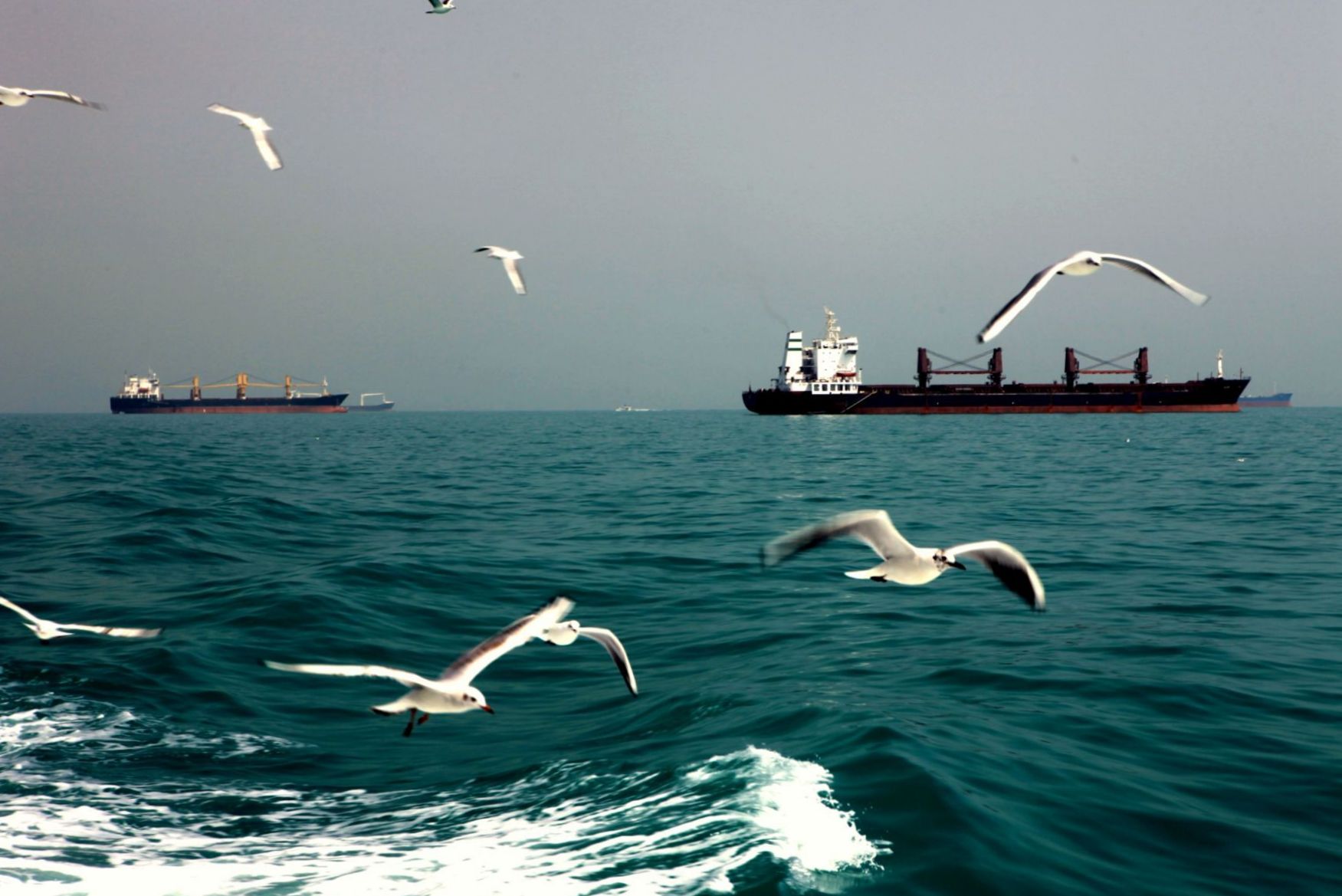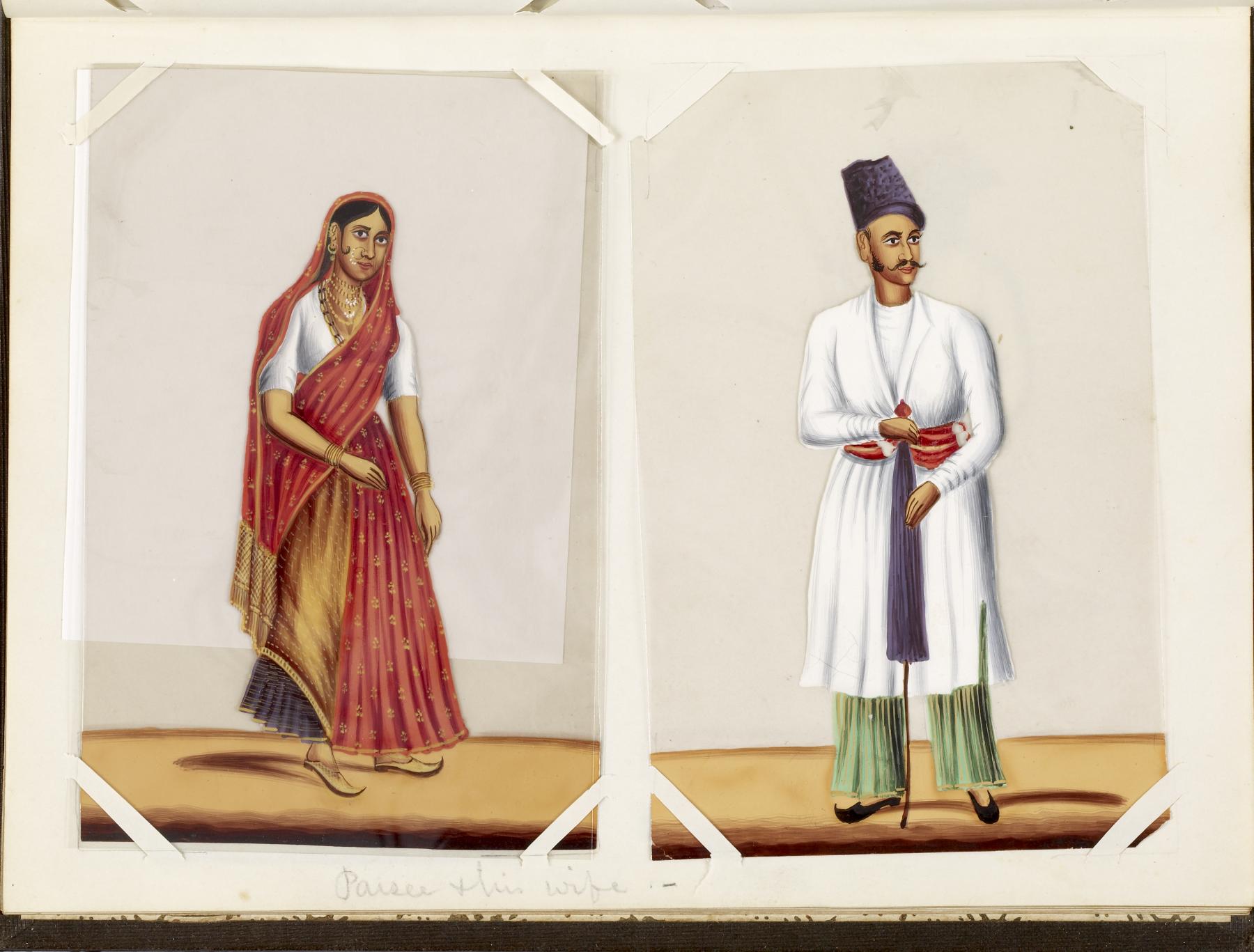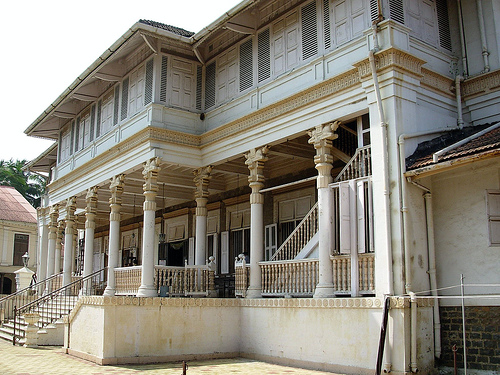|
Iranshah Atash Behram
The Iranshah Atash Behram, also known as the Udwada Atash Behram, is a sacred fire housed in a temple in Udvada, Valsad district, Gujarat on the west coast of India. The Atash Bahram, meaning "Victorious Fire", is the oldest fire temple in India, dated to the eighth century, and represents the historical cultural and religious links with Iran. The current temple housing the sacred fire was built in 1742 by Motlibai Wadia from Bombay. The temple structure, built spaciously, is well decorated and contains the Dasturji Kaiyoji Mirza hall and a museum. The main hall of the temple is accessed through a two-stage staircase. The temple attracts Zoroastrian pilgrims from all parts of India, Pakistan, and from around the world. Location The Udvada Atash Behram, also called the Iran Shah, "King of Iran", is a fire temple of the Zoroastrian religion; one of the eight in India. It is located in Udvada (also spelled Udwada) in Valsad District, Gujarat on the west coast of India. Outside Indi ... [...More Info...] [...Related Items...] OR: [Wikipedia] [Google] [Baidu] |
Fire Temple
A fire temple (; ) is a place of worship for Zoroastrians. In Zoroastrian doctrine, ''atar'' and '' aban'' (fire and water) are agents of ritual purity. Clean, white "ash for the purification ceremonies sregarded as the basis of ritual life", which "are essentially the rites proper to the tending of a domestic fire, for the temple ireis that of the hearth fire raised to a new solemnity". For, one "who sacrifices unto fire with fuel in his hand ..., is given happiness". , there were 167 fire temples in the world, of which 45 were in Mumbai, 105 in the rest of India, and 17 in other countries. Of these, only nine (one in Iran and eight in India) are the main temples known as Atash Behrams; the remainder are the smaller temples known as agiaries. History and development Concept First evident in the 9th century BCE, the rituals of fire are contemporary with that of Zoroastrianism itself. It appears at approximately the same time as the shrine cult and is roughly contempor ... [...More Info...] [...Related Items...] OR: [Wikipedia] [Google] [Baidu] |
Daman, Daman And Diu
Daman is a city and the administrative capital of the Indian territory of Dadra and Nagar Haveli and Daman and Diu. It is a municipal council situated in the Daman district of the union territory. The Daman Ganga River divides Daman into: Nani-Daman (Little Daman) and Moti-Daman (Big Daman). Despite its name, Nani-Daman is the larger of the two parts, while the old city is mainly in Moti-Daman. This holds most of the important entities, like the major hospitals, supermarkets, and major residential areas. Vapi, Gujarat, is the nearest city to Daman. Etymology The name "Daman" comes from the Daman Ganga River, while Diu is from the Sanskrit word dvipa, meaning “island.” From Mauryan times (4th–2nd century BCE), both were subject to various local and regional powers ruling in western India. In the 13th century Daman formed part of the Ramnagar state, which then became a tributary of the Gujarat sultans. Similarly, numerous dynasties in Kathiawar (Saurashtra) ruled Diu until ... [...More Info...] [...Related Items...] OR: [Wikipedia] [Google] [Baidu] |
Hindu
Hindus (; ; also known as Sanātanīs) are people who religiously adhere to Hinduism, also known by its endonym Sanātana Dharma. Jeffery D. Long (2007), A Vision for Hinduism, IB Tauris, , pp. 35–37 Historically, the term has also been used as a geographical, cultural, and later religious identifier for people living in the Indian subcontinent. It is assumed that the term ''"Hindu"'' traces back to Avestan scripture Vendidad which refers to land of seven rivers as Hapta Hendu which itself is a cognate to Sanskrit term ''Sapta Sindhuḥ''. (The term ''Sapta Sindhuḥ'' is mentioned in Rig Veda and refers to a North western Indian region of seven rivers and to India as a whole.) The Greek cognates of the same terms are "''Indus''" (for the river) and "''India''" (for the land of the river). Likewise the Hebrew cognate ''hōd-dū'' refers to India mentioned in Hebrew BibleEsther 1:1. The term "''Hindu''" also implied a geographic, ethnic or cultural identifier for ... [...More Info...] [...Related Items...] OR: [Wikipedia] [Google] [Baidu] |
Sanjan (Gujarat)
Sanjan is a town situated in Umargam taluka in the Valsad district in the state of Gujarat, India. Sanjan is located around 70 km from the Valsad city. It is the earliest settlement of the Parsis in India. Geography Sanjan Bandar, also called old Sanjan is the initial settlement. Sanjan is situated on the banks of Varoli river. Transport The town is served by Sanjan railway station which lies on New Delhi–Mumbai main line. The nearest airport is Surat Airport in Surat. History Sanjan is believed to have been founded by Zoroastrian refugees who sought asylum in Gujarat in 698 AD. A widely believed legend is that the Zoroastrians were offered a filled pot of milk by Jadi Rana, the King of Sanjan to signify that his kingdom was full. In response, the Zoroastrians poured sugar into the milk without spilling any milk, stating they would adapt to the kingdom and cause no disorder, to which the King agreed. Those Zoroastrians, whose descendants are today known as the Parsis ... [...More Info...] [...Related Items...] OR: [Wikipedia] [Google] [Baidu] |
Diu, India
Diu (), also known as Diu Town, is a medieval fortified town in Diu district in the union territory of Dadra and Nagar Haveli and Daman and Diu, India. Diu district is the tenth least populated district of India. The town of Diu lies at the eastern end of Diu Island and is known for its fortress and old Portuguese cathedral. It is a fishing town. The city is one of the hundred Indian cities competing in a national-level competition to get funds under Narendra Modi's flagship Smart Cities Mission. Diu will be competing for one of the last 10 spots against 20 cities from across India. In April 2018, it was reported that the Diu Smart City has already become India's first city to run on 100 percent renewable energy during the daytime. History The town and district were historically part of the Saurashtra region of Gujarat state and an important port on trade routes of the Arabian Sea of the Indian Ocean. Due to its strategic importance, there was a Battle of Diu in 1509 ... [...More Info...] [...Related Items...] OR: [Wikipedia] [Google] [Baidu] |
Persian Gulf
The Persian Gulf, sometimes called the Arabian Gulf, is a Mediterranean seas, mediterranean sea in West Asia. The body of water is an extension of the Arabian Sea and the larger Indian Ocean located between Iran and the Arabian Peninsula.United Nations Group of Experts on Geographical NameWorking Paper No. 61, 23rd Session, Vienna, 28 March – 4 April 2006. accessed 9 October 2010 It is connected to the Gulf of Oman in the east by the Strait of Hormuz. The river delta of the Shatt al-Arab forms the northwest shoreline. The Persian Gulf has many fishing grounds, extensive reefs (mostly rocky, but also Coral reef, coral), and abundant pearl oysters, however its ecology has been damaged by industrialization and oil spills. The Persian Gulf is in the Persian Gulf Basin, which is of Cenozoic origin and related to the subduction of the Arabian plate under the Zagros Mountains. The current flooding of the basin started 15,000 years ago due to sea level rise, rising sea levels of ... [...More Info...] [...Related Items...] OR: [Wikipedia] [Google] [Baidu] |
Hormuz Island
Hormuz Island (; ), also spelled Hormoz, Ormoz, Ormuz or Ormus, is an Iranian island in the Persian Gulf. Geography Hormuz Island has an area of . Located in the Strait of Hormuz, off the Iranian coast, the island is part of Hormozgan Province. It is sparsely inhabited, but some development has taken place since the late 20th century. Geology Reddish ochre on the island and its beaches, called Golak by natives, has been exploited for artistic and culinary purposes, and also attracts tourists. Degradation due to overuse of the ochre has resulted in actions by the Department of Environment (Iran), Department of Environment to protect it. The satellite images catching the concentric arrangement of the rocks show that Hormuz Island appears to be a salt diapir, composed of ancient seasalt deposits which, due to lack of salt-dissolving groundwater and rains, and due to their plastic deformabilty, can flow and squeeze just like ice; thus, under the squeezing pressure of other sedim ... [...More Info...] [...Related Items...] OR: [Wikipedia] [Google] [Baidu] |
Parsis
The Parsis or Parsees () are a Zoroastrian ethnic group in the Indian subcontinent. They are descended from Persian refugees who migrated to the Indian subcontinent during and after the Arab-Islamic conquest of Iran in the 7th century, when Zoroastrians were persecuted by the early Muslims. Representing the elder of the Indian subcontinent's two Zoroastrian communities, the Parsi people are culturally, linguistically, and socially distinct from the Iranis, whose Zoroastrian ancestors migrated to British-ruled India from Qajar-era Iran. The word ''Parsi'' is derived from the Persian language, and literally translates to ''Persian'' ().Parsee, n. and adj. – Oxford English Dictionary . oed.com. Retrieved on 2015-03-03. According to the 16th-century Parsi epic '' [...More Info...] [...Related Items...] OR: [Wikipedia] [Google] [Baidu] |
Islamic
Islam is an Abrahamic religions, Abrahamic monotheistic religion based on the Quran, and the teachings of Muhammad. Adherents of Islam are called Muslims, who are estimated to number Islam by country, 2 billion worldwide and are the world's Major religious groups, second-largest religious population after Christians. Muslims believe that Islam is the complete and universal version of a Fitra, primordial faith that was revealed many times through earlier Prophets and messengers in Islam, prophets and messengers, including Adam in Islam, Adam, Noah in Islam, Noah, Abraham in Islam, Abraham, Moses in Islam, Moses, and Jesus in Islam, Jesus. Muslims consider the Quran to be the verbatim word of God in Islam, God and the unaltered, final revelation. Alongside the Quran, Muslims also believe in previous Islamic holy books, revelations, such as the Torah in Islam, Tawrat (the Torah), the Zabur (Psalms), and the Gospel in Islam, Injil (Gospel). They believe that Muhammad in Islam ... [...More Info...] [...Related Items...] OR: [Wikipedia] [Google] [Baidu] |
Greater Persia
Greater Iran or Greater Persia ( ), also called the Iranosphere or the Persosphere, is an expression that denotes a wide socio-cultural region comprising parts of West Asia, the South Caucasus, Central Asia, South Asia, and East Asia (specifically the Tarim Basin)—all of which have been affected, to some degree, by the Iranian peoples and the Iranian languages. It is defined by having long been ruled by the dynasties of various Iranian empires, under whom the local populaces gradually incorporated some degree of Iranian influence into their cultural and/or linguistic traditions; or alternatively as where a considerable number of Iranians settled to still maintain communities who patronize their respective cultures, geographically corresponding to the areas surrounding the Iranian plateau. It is referred to as the "Iranian Cultural Continent" by ''Encyclopædia Iranica''. Throughout the 16th–19th centuries, Iran lost many of the territories that had been conquered under th ... [...More Info...] [...Related Items...] OR: [Wikipedia] [Google] [Baidu] |
Udvada Fire Temple 1905
Udvada is a town situated in Pardi taluka in the Valsad district in the state of Gujarat, India. Udvada is a coastal town located around 24 km from the Valsad city. The Zoroastrian temple, Udvada Atash Behram is situated here. Etymology The name ''Udvada'' means the 'grazing ground of camels', which it used to be before it became a fishing town. Geography Udvada is situated on the mouth of Kolak River. It also has a hill on the outskirts of the town. It is neighbours with Daman and Diu and Dadra and Nagar haveli which is a Union Territory of India. Transport The town is served by Udvada railway station for passenger trains & Vapi Railway Station for mail exp & superfast trains including with tejas, Shatabdi, which lies on New Delhi–Mumbai main line. The nearest airport is Surat Airport in Surat. Mumbai is the biggest airport nearby. Zoroastrianism The Atash Behram The Udvada Atash Behram () is the most sacred of the Zoroastrian fire temples in India and the oldest c ... [...More Info...] [...Related Items...] OR: [Wikipedia] [Google] [Baidu] |








